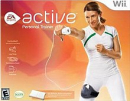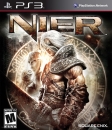the_bloodwalker said:
I checked all three evolutions of controllers and even though they were impressive, WM+ is by far the better of the three. In sony's Eye camera with the wand and on NATAL I found many problems in terms of game design and gaming experience
NATAL:
Microsoft made one step forward and three steps back with this technology, and even though it's impressive, it fails to be a competent input device on it's own for gaming. The step forward it took was with the camera technology and it's capabilities to track different movements by different people and reacts accordigly, this step in technology is forward by reuniting different people to play a game with just one input device for the console: the camera itself.
The first step back is that by removing the controller from the player's hands, it actually disconnects from the game more than with a standard controller, because thhe number of outputs from teh system to the player is reduced to just audio and video. With a standard controller, when you crash in a racing game, your controller shakes and the amplitude of that motion depends on the force of the impact, you know, besides seeing the OMG scene and hearing the sounds of metal becoming scrap, you feel how hard that hit was. With Natal, you only see and hear, not feel.
A simple solution will be having peripherals that will deliver that rumble feedback to the player, these peripherals will differ depending on the game in otder to feel more immersive to the game (racket for tennis, wheel for racing, etc). However, by having these extension, the concept of hand-free playing is nullified, and will seem much more similar to Sony's solution for motion, only with cheaper peripherals and a more expensive camera. This is the second step back. Now, if this peripheral is made (i.e. a glove --put power glove joke here--), what should give the rumble commands to the feedback devive? The Camera, it will increase it's cost; so the solution will be the console, and that means you have two devices: one that serves as input and one as output. That's the third step back
Under this analysis, even thought the technology is the most advanced of the three it comes last place as a capable gaming input device
PS EYE + MOTION CONTROLLERS
I watched the demos during the conference and it impressed me with the real time 1:1 response that is faster than WM+. the augmented reality to add a virtual add-on to the controller is also interesting. A step in the right direction far better than Microsoft, however, they have a very long way to go, because it's the technology that is way behind Natal. They did the right thing by keeping a controller in the gamer's hands, that way a feedback can be given to the pleyer in the form of rumble -and audio if they manage to copy from the wii remote- when an action is performed.
The first issue I see is that the "ball" in teh controller (will be replaced in the future) acts as a reference to the camera to locate the controller's position in space, so in that you can tell that the accelerometer technology is behind SIXAXIS to have it cheap. Only tilt sensors (gyroscopes) are used to detect the controller's rotation whle teh position is detected by the camera itself, so you can hide the refenrence to teh camera and teh controller is as good as a plastic stick.
The solution will mean to have accelerometers or ultra sonic sensors to pintpoit the location of the controller besides the camera, that could be in the same controller on in the extension that it will have. However, this will rener the camera useless and relegated only as a simple expensive eye toy and teh controller will look very similar to the Wii remote+nunchuck. This is the problem I see that Sony needs to resolve and that takes more time that the development of the technology.
Besides, as it is now, you have two input devices and one serves in extra feedback to the player, is not integrated
Wii MOTION+
The Wii sensor bar is not an putput device, it only receives energy from teh console. So you can replace it woth two candles or any sensor bar with infrared emmiters and batteries. and games like Mario Kart does not use the IR in a race. The technology resides entirelly on the Wii-remote.
With the Wii remote you have one input device that delivers feedback to the player in rumble and the added speaker that deliver sounds that are not in your TV or audio system. The nunchuck and the WiiMotion+ are just extension that makes teh remote a fully integrated input device that to the Wii it's still one and one only.
WM+ adds not just more presition to the movement, but more responsiveness and more accurate position placement that reduces the sensor bar to just a reference to point at the tv screen.
CONCLUSION:
Even though in sense of technology NATAL>PSEYE + MOTION CONTROLS>WM+ in actual gaming applications as integrated systems
1. WM+ => done right and ready for production on almost any kind of game
2. PSEye + Motion => good concepts but with many, many roadblocks
3. NATAL => It will be far more successful in PC applicactions than in actual gaming
|























































